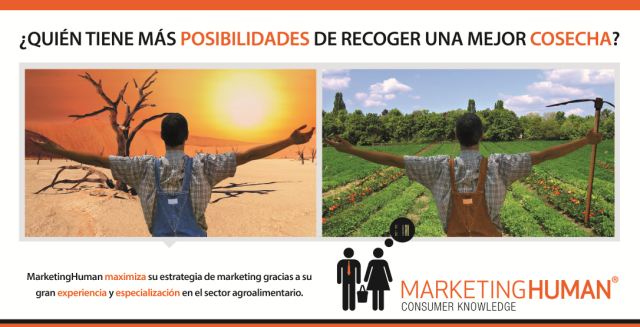Neuromarketing is the application of the neuroscientific methods and knowledge for understanding human behaviour in the markets and offers essential knowledge for the successful sale of olive oils and wines and the detailed analysis of consumer behaviors, neuropsychology and psychology. We interviewed David Martínez Roig to learn a bit more about this subject.
How was the idea of neuromarketing in agri-food and retail set up? It was a long time ago. I have an extensive experience in agrifood and retail and I have a degree in Psychology and consumer behavior, so it is very easy to apply this knowledge to retail and food. Also, nowadays, we have better tools and scientific knowledge. Neuropsychology studies the relationship between the brain and behaviour. Psychology and neuromarketing allow for the more detailed analysis of people’s desires, needs, experiences, attention, perception, memory and motivations. Besides, launching new products without studying consumer behavior is the key to failure… and sadly, it happens very often. The main idea is to help companies to understand their customers. That is the reason and the message of our brand, “MarketingHUMAN”.

David Martínez Roig
What are the main tools used in neuromarketing to understand consumers behavior?
It depends on your objectives and budget. For instance, the cheapest way is to use and apply the knowledge and scientific consumer research. Consumer behavior has been studied for a long time and it is possible to find out a lot of information about it. Also, you can use the eye tracker, or other biometrics as heart rate, respiratory rate and galvanic skin response.
If you have a higher budget it is possible to use functional magnetic resonance imaging (fMRI) to measure changes in activity in parts of the brain, electroencephalography (EEG) and Steady state topography (SST) to measure activity in specific regional spectra of the brain response.
What exactly is the ‘eye tracking’?
The eye tracking technique allows us to analyse consumer behaviour at the point of sale or to improve the graphic design of an olive oil and wine packaging.
![]()
This method tracks the movement of the eyeball. Analysis of the eye movements is a type of biometric measurement that is of great help in understanding unconscious consumer acts.
The technology used to carry out this eye analysis relies on high-speed cameras with a view to tracing eyeball movement, pupil dilation and consumer blinking, among other factors. The glasses used at the point of sale have evolved enormously in recent years (as have the devices for office and laboratory studies) and they are designed in such a non-invasive way that some subjects even go to the bathroom or blow their nose while participating in a study at the point of sale, forgetting that they are taking part in a research project.
The information gathered from the visual journeys of the participants allows to be traced and for the creation of heat maps indicating the “hot” spots of the image, that is, where the eyes rested for longest.
They may also indicate the routes followed and the order in which the design elements are examined. It is very important to complement this data with “in depth” interviews.
What do we already know about consumer’s behavior in oil and wine sectors?
We know a lot of very interesting things. For instance, according to a study published by Goldstein, Almenberg, Dreber, Emerson, et. Cols. 2008 in the American Association of Wine Economists, the pleasure obtained when consuming wine depends as much on the intrinsic qualities (pleasure and aroma) as it does on the external aspects (price and presentation). The same findings can be extrapolated to olive oils.
What are the key factors at consumer buying decision process at the wine and olive oil sectors?
Like in other products, desires, needs, experiences, memories, attention, perception, memory and motivations. Branding strategy must consider all these factors.
According to neuromarketing studies what are the main features we should pay attention to when it comes to a product packaging design and materials?
The brain responds to agri-food marketing actions in a specialised way and the mirror neurons play a fundamental role. When a person eating a foodstuff is observed, the brain of the observer experiences similar sensations, as if both of them were consuming the same product making them feel various emotions and feelings.
The sensations transmitted by a specific olive oil brand may be negatively affected by the serving method. If we do not correctly analyse the ease with which consumers can pour the oil in various uses, we might find that the product does not pour fluidly and that the application is not convenient, thus giving rise to negative sensations or even worse, rejection if the oil spills forth abruptly, staining a suit or dress valued by the user.
Another relevant fact provided by neuromarketing is the fact that the brain, for evolutionary reasons, processes images far faster than written words and that it also prefers “natural” images associated with the foods.
Bearing this information in mind and when planning the pack selection and design of a new packaging for olive oil, is it logical to create a minimalist or artistic design with no image or reference whatsoever to the “naturalness” of olive oil?
What is the role of packaging in the consumer buying decision process?
It plays a very important role. For instance, according to a study by the University of Jaén, presented at Expoliva 2011 (SEJ-315), the packaging type used has the effect of improving the perceived quality of an extra virgin olive oil by 14% (in terms of aesthetics, visual appeal, functionality, hygienic pouring, etc.).Does that 14% merit an investment in improving the pack, thus obtaining a better return on investment?
Neuromarketing and its tools also allow us to precisely measure the attention, emotional commitment and recall in such a way that we can compare two packaging designs. Using the measurements received through eye tracking and brain sensors, we can analyse:
-Which of the designs scores is the highest when capturing the consumer’s attention (fundamental for the oil’s success at the point of sale)
– Determine which design scores best on purchase intention, novelty and knowledge level.
– Compare our design with that of the competition.
All of this information, allows us to design a packaging that gives us a competitive edge over our competitors in terms of capturing attention at the point of sale, perception of a natural product and emotional bond with the brand.
Vargas crafts eco wood packaging for olive oil and wine products, among other sectors. What do consumers think about eco packaging and natural materials?
Eco packaging and natural materials are very important on consumer minds. It is true that consumers in some countries are focused on price, but it is also true that eco packaging and natural materials are an “added value”. For instance, according to Spanish Ministry of Agriculture, ecological market is growing: in 2010 there were 1,6 millions of ecological product producers and sales over 44.500€ millions. Of course, an ecological product must use an eco packaging according to logical concordance.
About Wine Spiral Project:

Wine Spiral Project is an international platform connecting up the main agents in the wine industry. It has outstanding potential as its network is constantly expanding. It is the First International Community for Wine Innovation.

